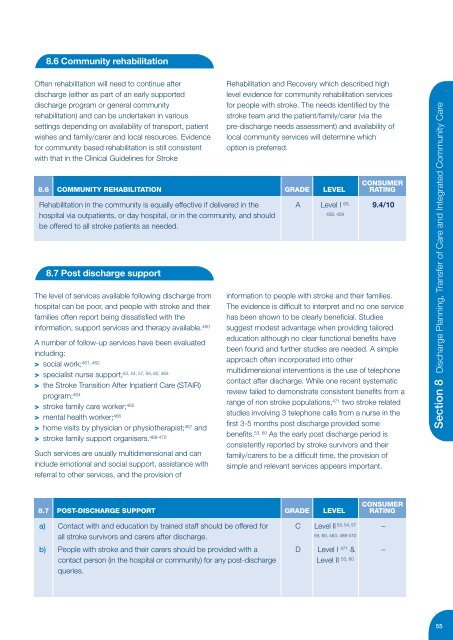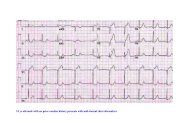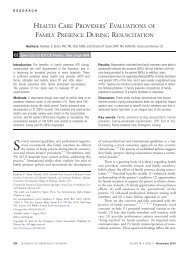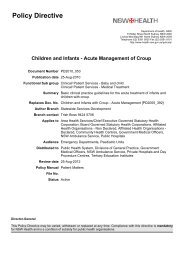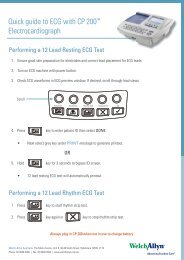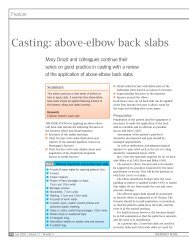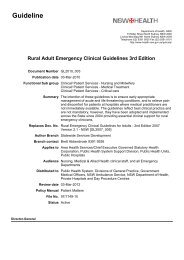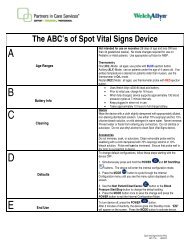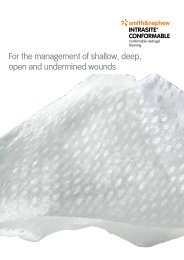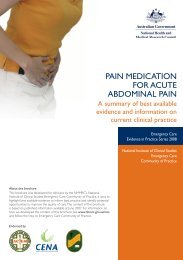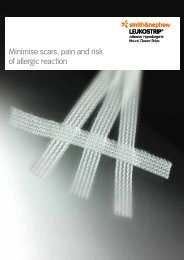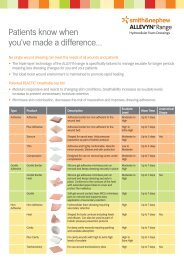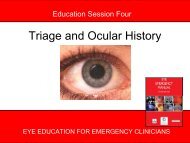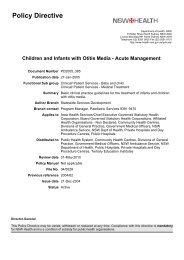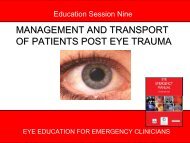Clinical Guidelines for Acute Stroke Management - Living on the EDge
Clinical Guidelines for Acute Stroke Management - Living on the EDge
Clinical Guidelines for Acute Stroke Management - Living on the EDge
You also want an ePaper? Increase the reach of your titles
YUMPU automatically turns print PDFs into web optimized ePapers that Google loves.
8.6 Community rehabilitati<strong>on</strong><br />
Often rehabilitati<strong>on</strong> will need to c<strong>on</strong>tinue after<br />
discharge (ei<strong>the</strong>r as part of an early supported<br />
discharge program or general community<br />
rehabilitati<strong>on</strong>) and can be undertaken in various<br />
settings depending <strong>on</strong> availability of transport, patient<br />
wishes and family/carer and local resources. Evidence<br />
<str<strong>on</strong>g>for</str<strong>on</strong>g> community based rehabilitati<strong>on</strong> is still c<strong>on</strong>sistent<br />
with that in <strong>the</strong> <str<strong>on</strong>g>Clinical</str<strong>on</strong>g> <str<strong>on</strong>g>Guidelines</str<strong>on</strong>g> <str<strong>on</strong>g>for</str<strong>on</strong>g> <str<strong>on</strong>g>Stroke</str<strong>on</strong>g><br />
Rehabilitati<strong>on</strong> and Recovery which described high<br />
level evidence <str<strong>on</strong>g>for</str<strong>on</strong>g> community rehabilitati<strong>on</strong> services<br />
<str<strong>on</strong>g>for</str<strong>on</strong>g> people with stroke. The needs identified by <strong>the</strong><br />
stroke team and <strong>the</strong> patient/family/carer (via <strong>the</strong><br />
pre-discharge needs assessment) and availability of<br />
local community services will determine which<br />
opti<strong>on</strong> is preferred.<br />
CONSUMER<br />
8.6 COMMUNITY REHABILITATION GRADE LEVEL RATING<br />
Rehabilitati<strong>on</strong> in <strong>the</strong> community is equally effective if delivered in <strong>the</strong> A Level I 63, 9.4/10<br />
hospital via outpatients, or day hospital, or in <strong>the</strong> community, and should<br />
458, 459<br />
be offered to all stroke patients as needed.<br />
8.7 Post discharge support<br />
The level of services available following discharge from<br />
hospital can be poor, and people with stroke and <strong>the</strong>ir<br />
families often report being dissatisfied with <strong>the</strong><br />
in<str<strong>on</strong>g>for</str<strong>on</strong>g>mati<strong>on</strong>, support services and <strong>the</strong>rapy available. 460<br />
A number of follow-up services have been evaluated<br />
including:<br />
> social work;<br />
461, 462<br />
> specialist nurse support;<br />
53, 54, 57, 59, 60, 463<br />
> <strong>the</strong> <str<strong>on</strong>g>Stroke</str<strong>on</strong>g> Transiti<strong>on</strong> After Inpatient Care (STAIR)<br />
program; 464<br />
> stroke family care worker; 465<br />
> mental health worker; 466<br />
> home visits by physician or physio<strong>the</strong>rapist; 467 and<br />
> stroke family support organisers. 468-470<br />
Such services are usually multidimensi<strong>on</strong>al and can<br />
include emoti<strong>on</strong>al and social support, assistance with<br />
referral to o<strong>the</strong>r services, and <strong>the</strong> provisi<strong>on</strong> of<br />
in<str<strong>on</strong>g>for</str<strong>on</strong>g>mati<strong>on</strong> to people with stroke and <strong>the</strong>ir families.<br />
The evidence is difficult to interpret and no <strong>on</strong>e service<br />
has been shown to be clearly beneficial. Studies<br />
suggest modest advantage when providing tailored<br />
educati<strong>on</strong> although no clear functi<strong>on</strong>al benefits have<br />
been found and fur<strong>the</strong>r studies are needed. A simple<br />
approach often incorporated into o<strong>the</strong>r<br />
multidimensi<strong>on</strong>al interventi<strong>on</strong>s is <strong>the</strong> use of teleph<strong>on</strong>e<br />
c<strong>on</strong>tact after discharge. While <strong>on</strong>e recent systematic<br />
review failed to dem<strong>on</strong>strate c<strong>on</strong>sistent benefits from a<br />
range of n<strong>on</strong> stroke populati<strong>on</strong>s, 471 two stroke related<br />
studies involving 3 teleph<strong>on</strong>e calls from a nurse in <strong>the</strong><br />
first 3-5 m<strong>on</strong>ths post discharge provided some<br />
benefits. 53, 60 As <strong>the</strong> early post discharge period is<br />
c<strong>on</strong>sistently reported by stroke survivors and <strong>the</strong>ir<br />
family/carers to be a difficult time, <strong>the</strong> provisi<strong>on</strong> of<br />
simple and relevant services appears important.<br />
Secti<strong>on</strong> 8 Discharge Planning, Transfer of Care and Integrated Community Care<br />
CONSUMER<br />
8.7 POST-DISCHARGE SUPPORT GRADE LEVEL RATING<br />
a) C<strong>on</strong>tact with and educati<strong>on</strong> by trained staff should be offered <str<strong>on</strong>g>for</str<strong>on</strong>g> C Level II 53, 54, 57 –<br />
all stroke survivors and carers after discharge.<br />
59, 60, 463, 468-470<br />
b) People with stroke and <strong>the</strong>ir carers should be provided with a D Level I 471 & –<br />
c<strong>on</strong>tact pers<strong>on</strong> (in <strong>the</strong> hospital or community) <str<strong>on</strong>g>for</str<strong>on</strong>g> any post-discharge Level II<br />
53, 60<br />
queries.<br />
55


